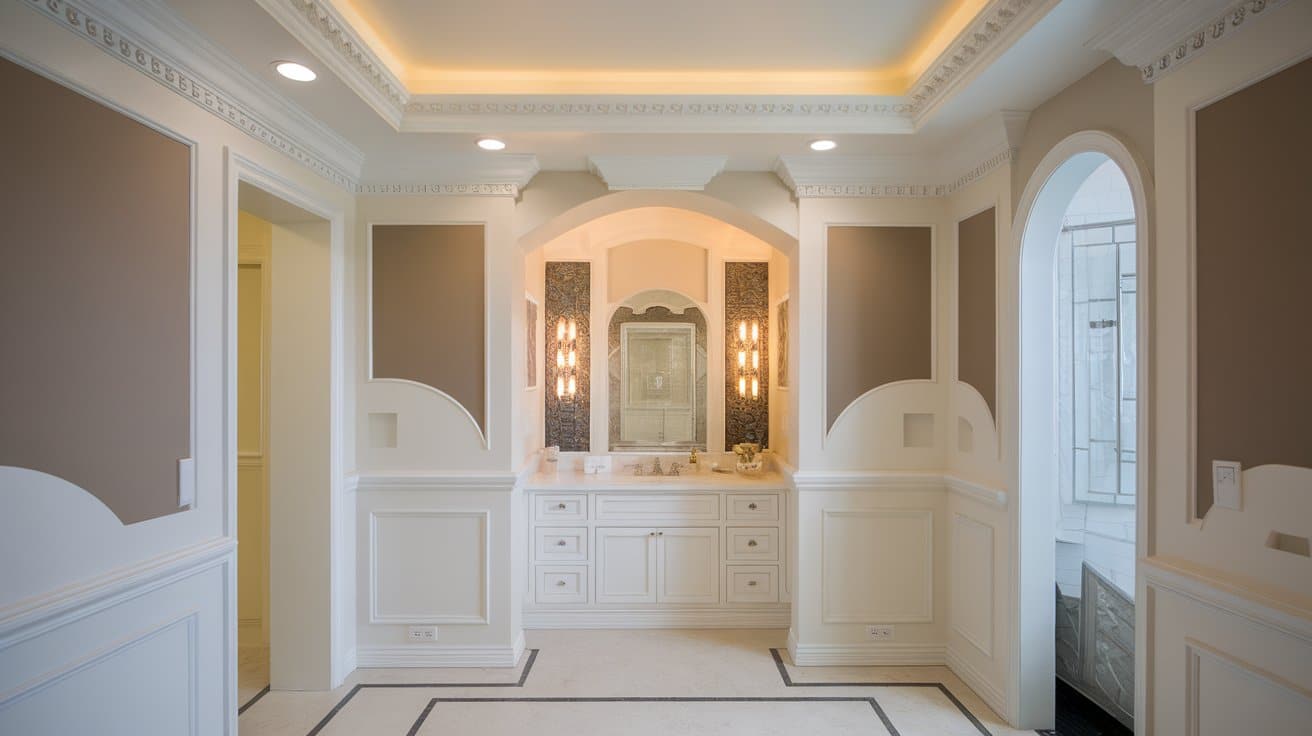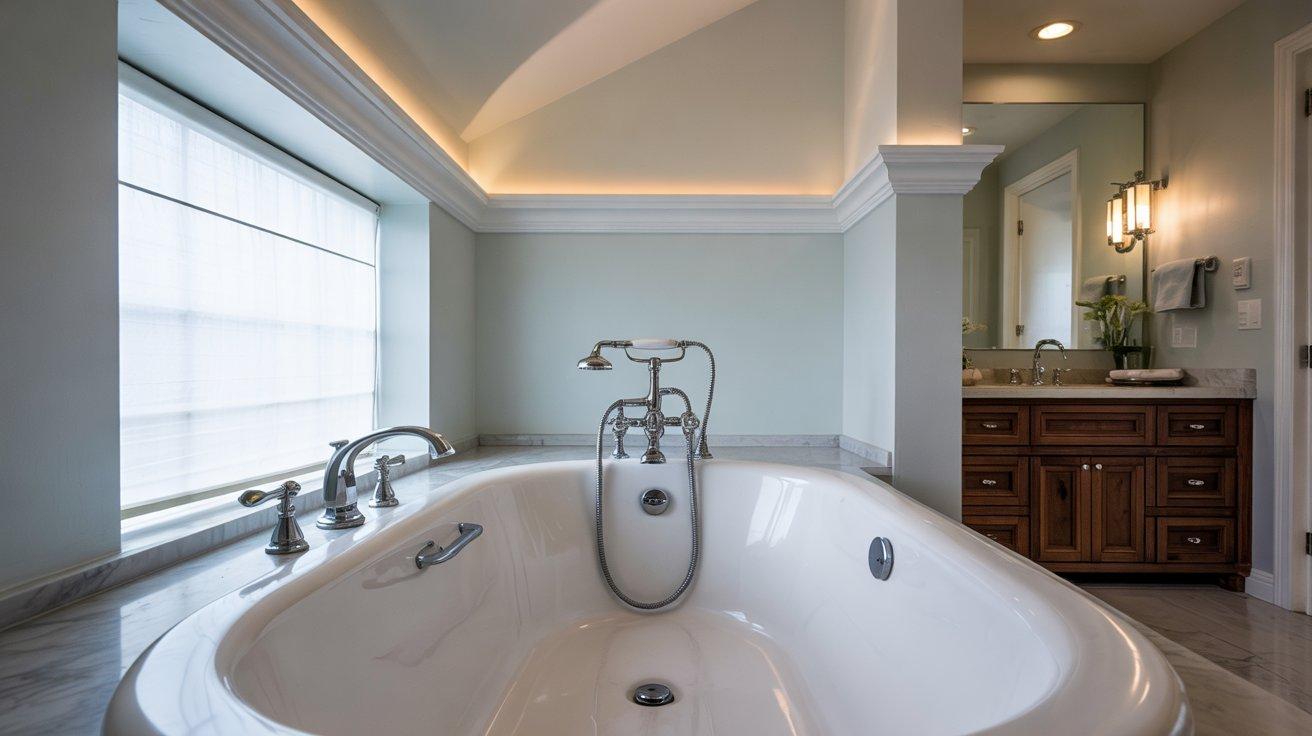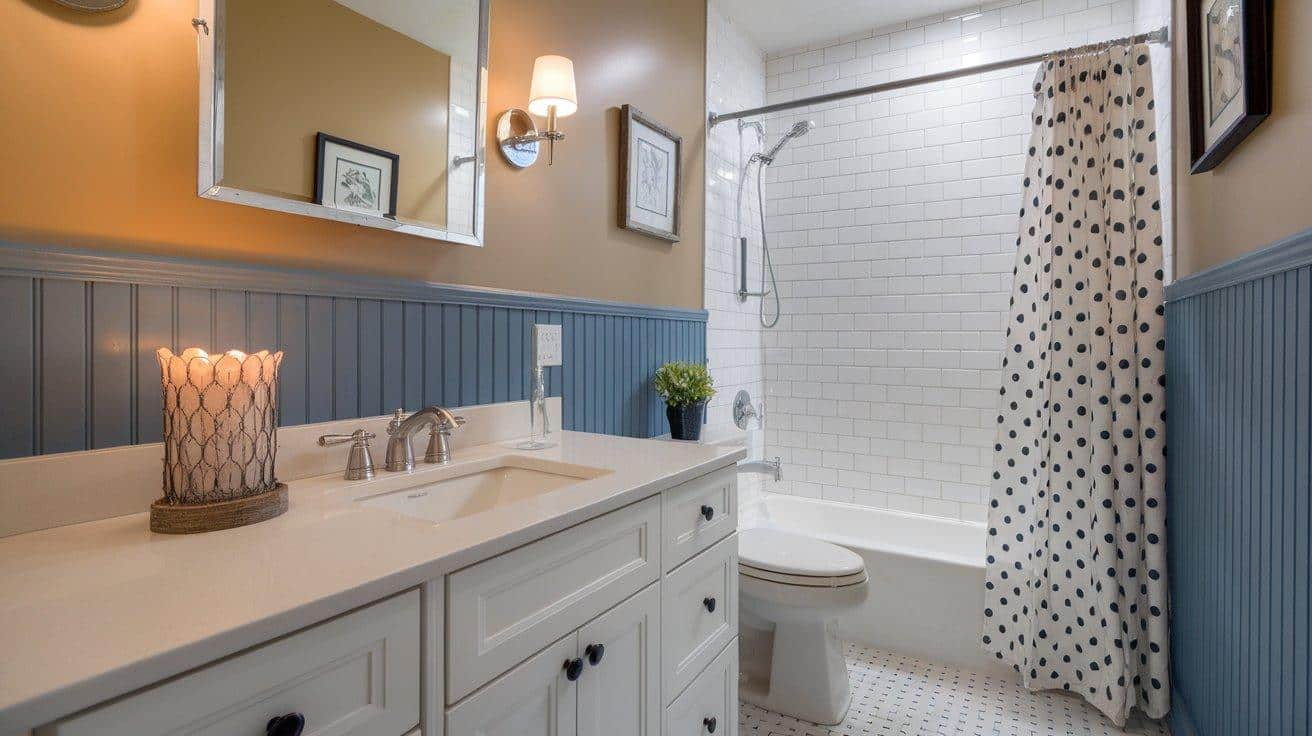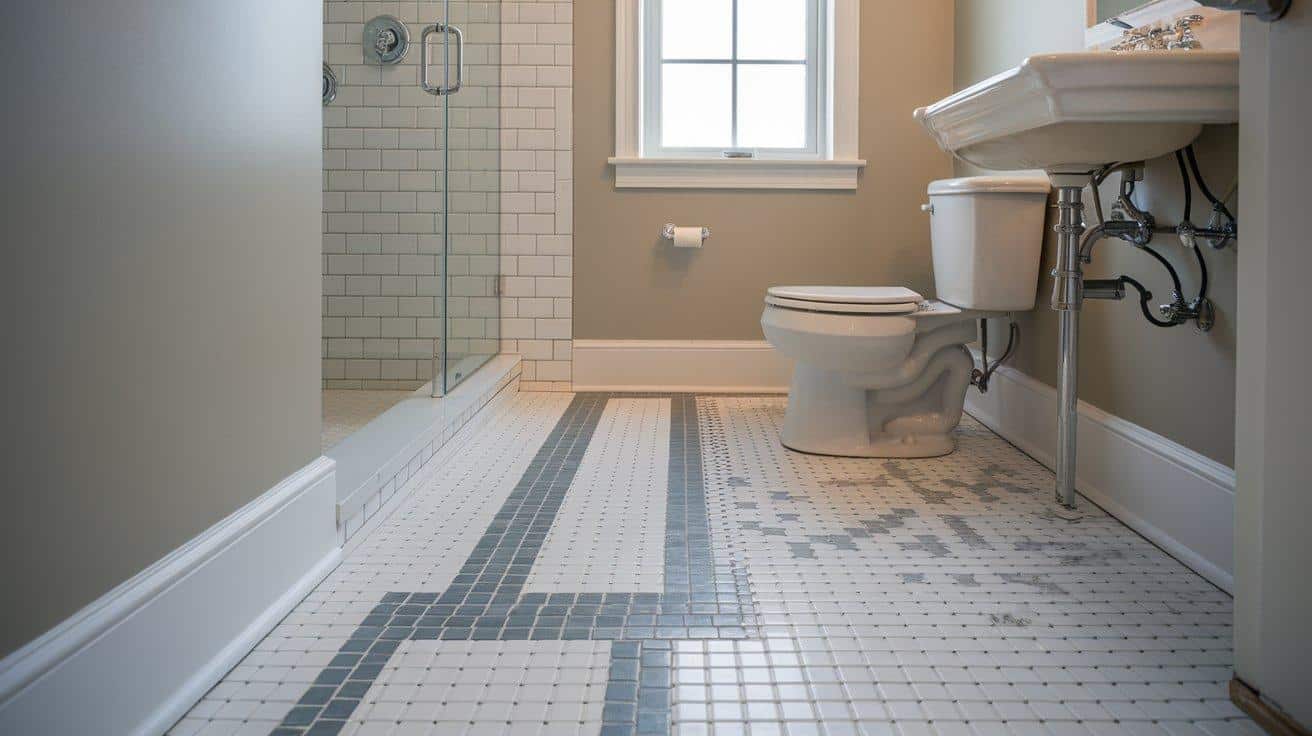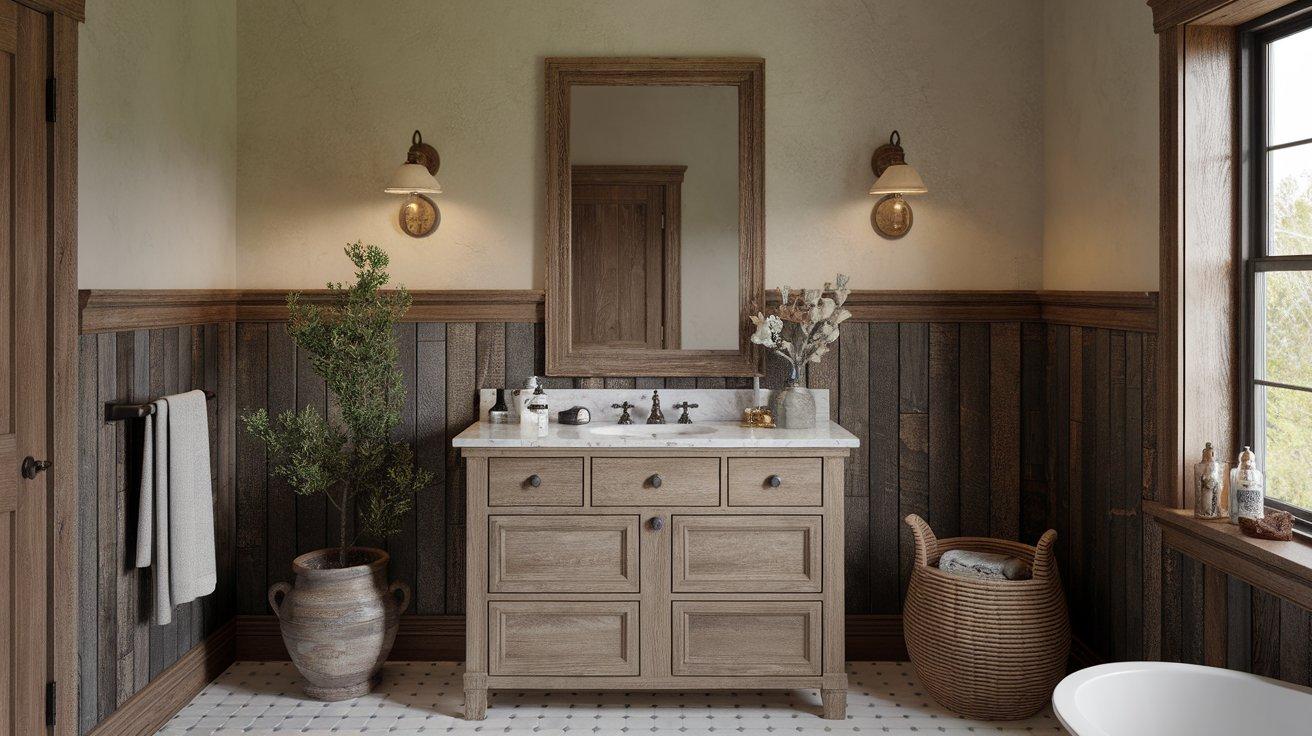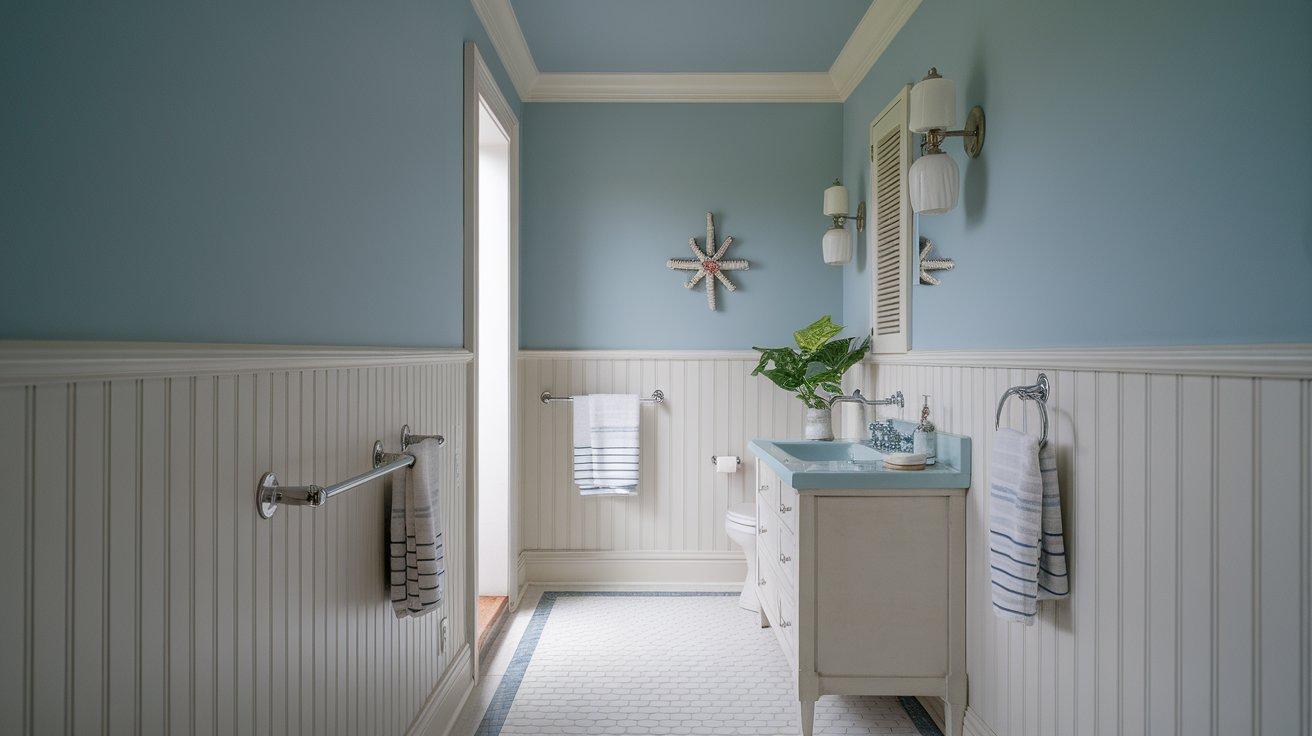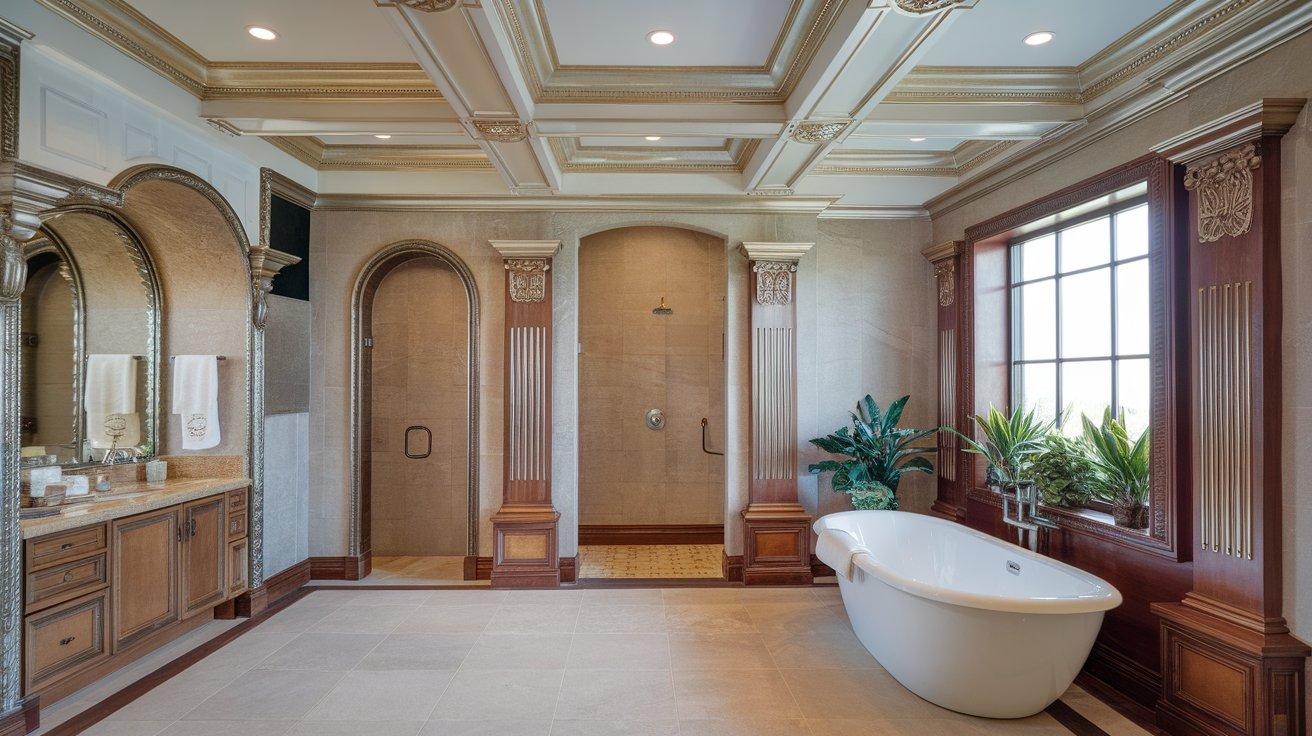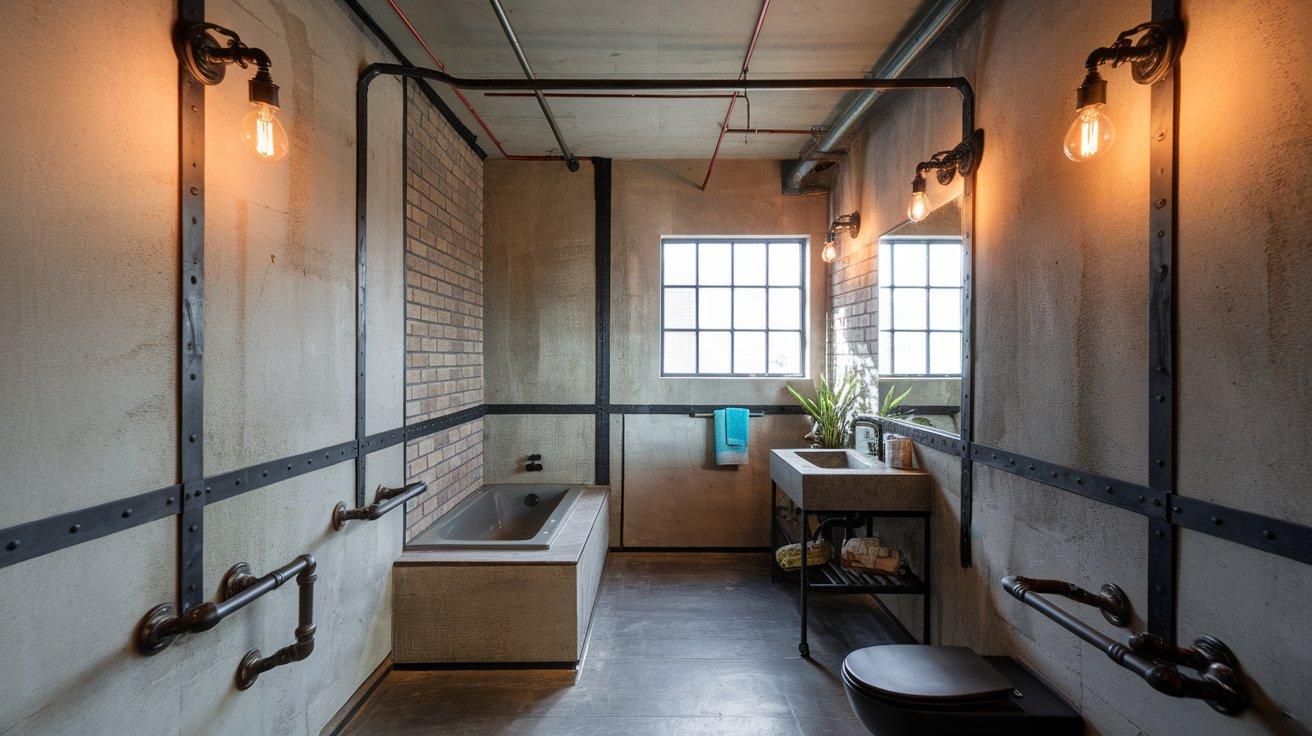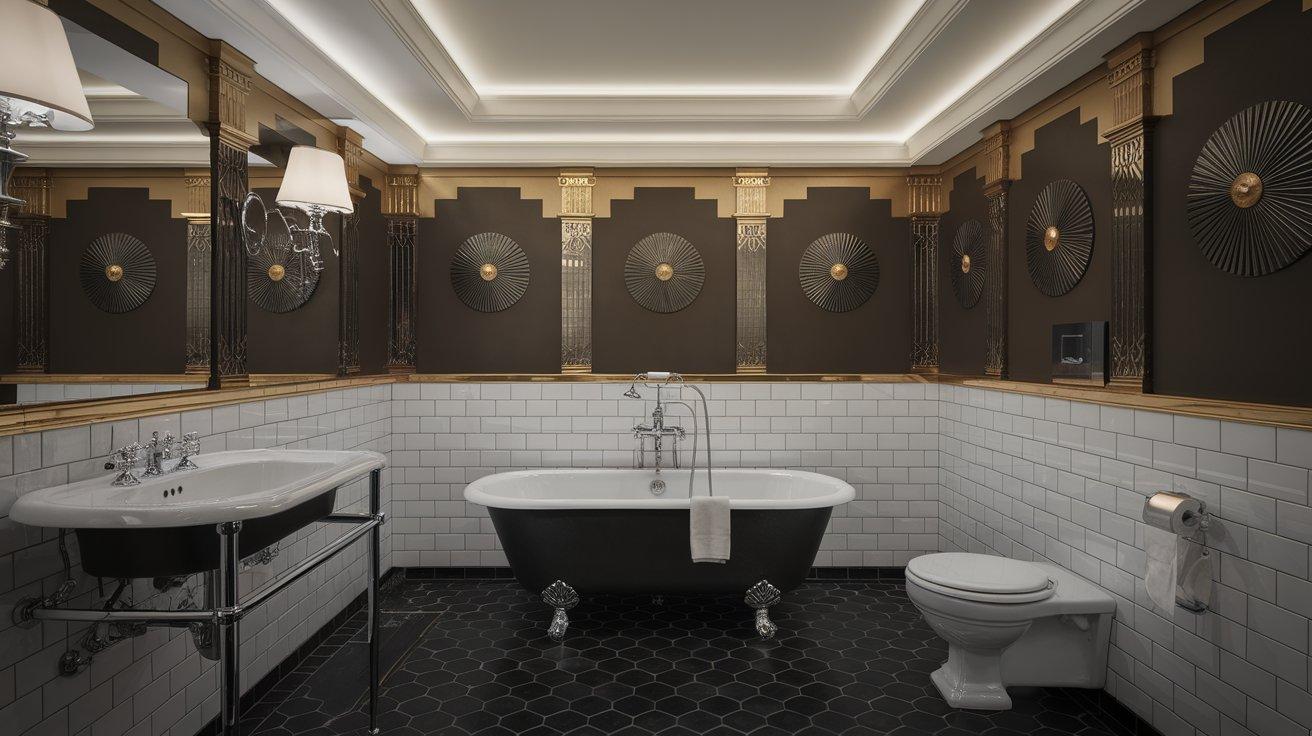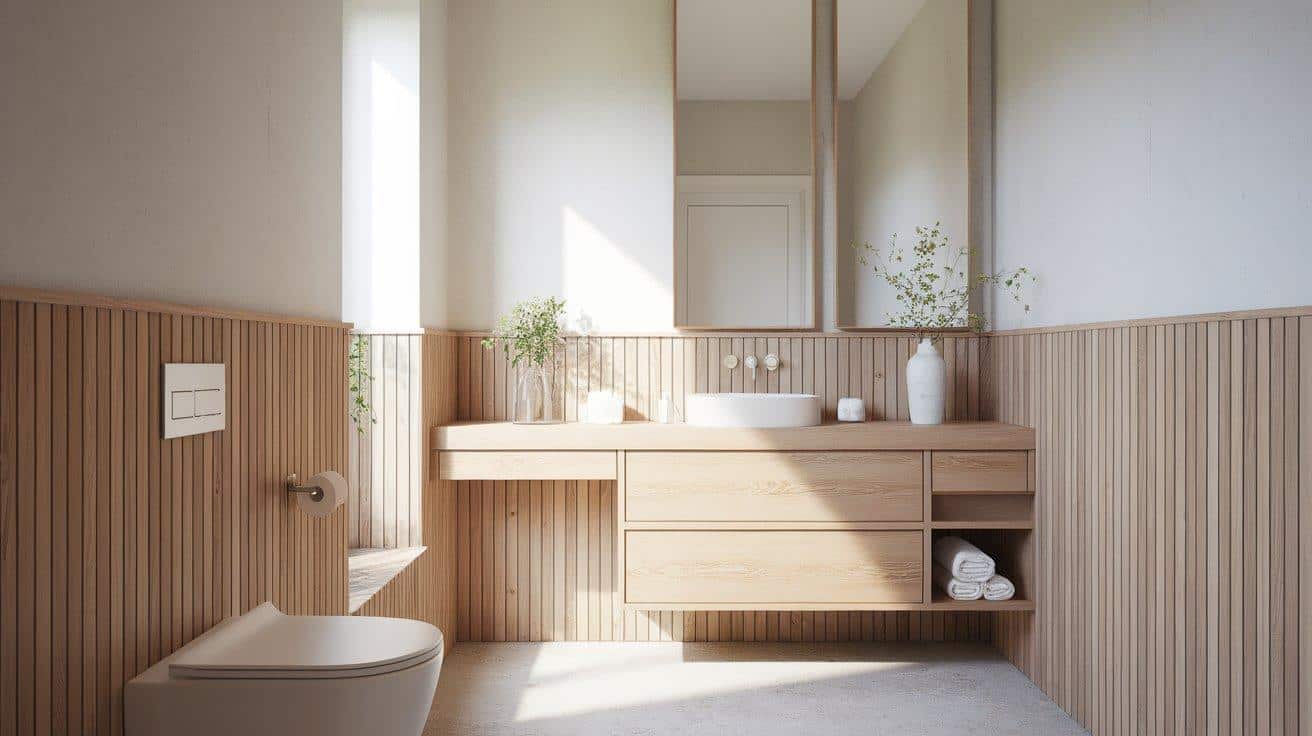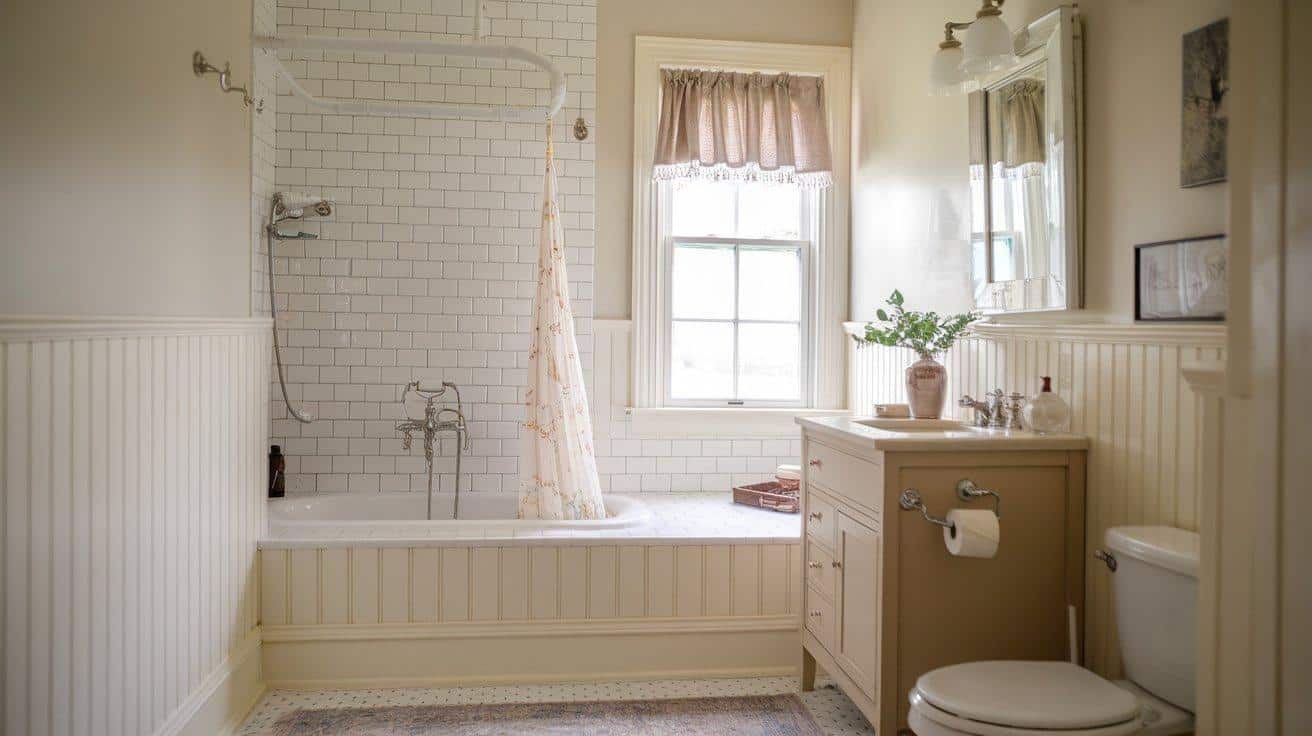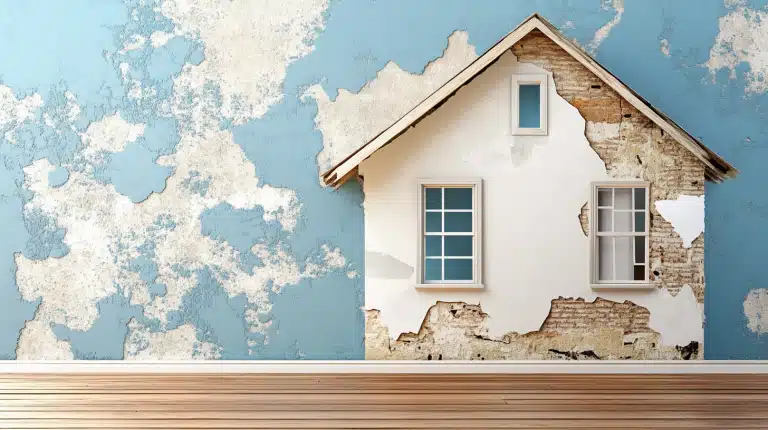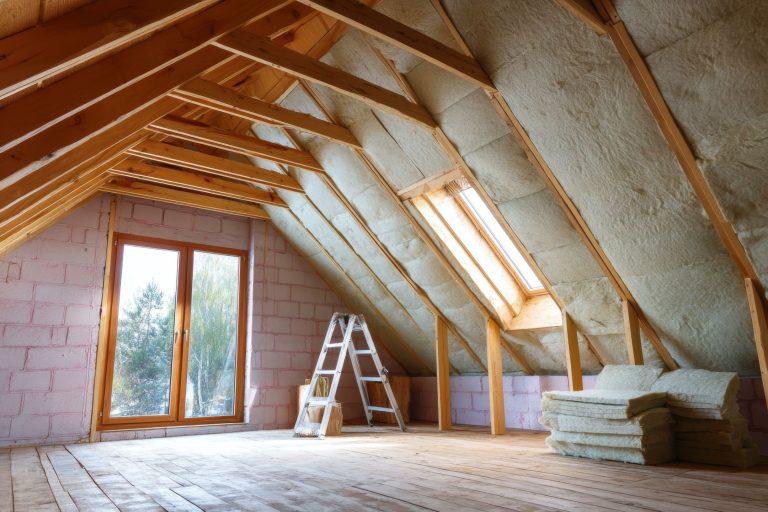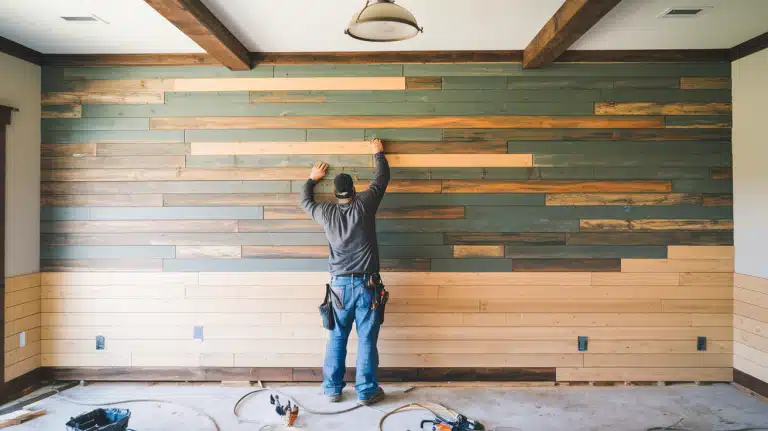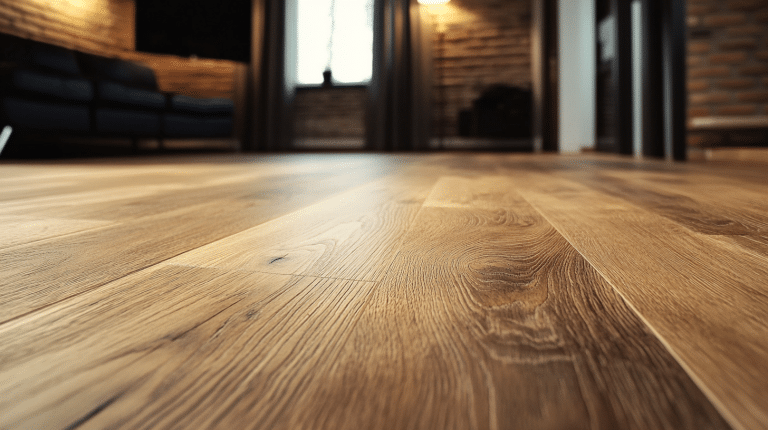How to Choose the Best Bathroom Molding Ideas for Your Home
Want to turn your plain bathroom into a space that feels custom and polished? Adding molding might be the missing piece your bathroom needs to look professionally designed.
Many homeowners spend thousands on new fixtures but ignore molding details. This oversight leaves bathrooms looking unfinished, regardless of how expensive the tiles or vanity may be.
Molding creates definition between surfaces while hiding imperfections. It adds architectural interest to flat walls and makes any bathroom appear more expensive than it costs to renovate.
The right molding choice depends on your style preferences, budget, and the existing features of your bathroom.
Let’s find out how various molding options can significantly change your bathroom’s character and visual appeal.
What Is Molding?
Molding refers to decorative strips of wood, plastic, or composite materials used in architecture. These strips get attached to walls, ceilings, or floors to add visual appeal.
Different types of molding serve various purposes. Some hide gaps between surfaces. Others purely add decorative touches to plain walls.
Bathroom molding must handle moisture and humidity. Materials such as PVC, MDF, or treated wood are best suited for use in wet environments. These materials resist warping and damage from steam.
Installation involves measuring, cutting, and securing molding pieces to surfaces. Most molding attaches with adhesive, nails, or screws, depending on the material and location.
Impact of Molding on Bathroom Design
Molding completely changes the look and feel of a bathroom. Even basic molding makes any space appear more finished and intentional.
Key impact of molding in bathroom design
- Creates visual height – Crown molding draws eyes upward, making ceilings appear taller.
- Defines spaces – Chair rails and wainscoting separate wall areas for color or pattern changes.
- Hides imperfections – Molding covers uneven joints, gaps, and wall flaws.
- Increases home value – Quality molding details suggest custom craftsmanship to buyers.
- Provides protection – Baseboards shield walls from water damage and cleaning equipment.
Popular Bathroom Molding Styles
Various molding styles match different bathroom designs and personal preferences. Each style provides distinct benefits, visual appeal, and can complement your existing decor while adding character to your space.
1. Crown Molding for Bathrooms
Crown molding runs along the ceiling edge where the walls meet. This classic detail works in both traditional and modern bathrooms.
It creates a finished look that makes any bathroom appear more professionally designed and intentional.
Benefits of bathroom crown molding:
- Makes low ceilings appear higher.
- Creates smooth transitions between wall and ceiling colors.
- Adds a formal, finished appearance.
- Available in simple or ornate profiles.
Best materials for bathroom crown:
- PVC: Completely waterproof and paintable.
- Polyurethane: Lightweight with intricate details.
- MDF: Budget-friendly but needs proper sealing.
For those interested in installing crown molding themselves, this DIY Crown Molding Installation guide offers step-by-step instructions to achieve a professional finish.
2. Wainscoting
Wainscoting covers the lower portion of bathroom walls. This protective and decorative treatment typically extends 32 to 48 inches from the floor. It serves both functional and visual purposes in bathroom design.
Wainscoting advantages:
- Protects walls from water splashes.
- Creates two-tone wall designs.
- Adds traditional charm.
Popular wainscoting options:
| Style | Description | Best For |
|---|---|---|
| Beadboard | Vertical grooved panels | Cottage, farmhouse styles |
| Board and batten | Wide boards with narrow strips | Modern, transitional looks |
| Raised panel | Traditional paneled squares | Formal, classic bathrooms |
| Flat panel | Simple, clean rectangles | Contemporary designs |
3. Baseboards
Baseboards run along the floor where walls meet. They protect walls from moisture and create clean finished edges. Proper baseboard selection affects both function and style in bathroom spaces.
Baseboard considerations:
- Height typically ranges from 3 to 6 inches.
- Taller baseboards suit larger bathrooms.
- Curved or rounded tops work better than sharp edges.
- Must be properly sealed against moisture.
Material choices:
- PVC baseboards: Best moisture resistance.
- Composite materials: Good balance of cost and durability.
- Ceramic tile: A completely waterproof option.
- Natural stone: A luxury choice for high-end bathrooms
For inspiration on incorporating baseboards into various styles, explore these Stunning Farmhouse Baseboards Trim Ideas that showcase creative applications.
Creative Bathroom Style with Molding
Modern bathrooms benefit from fresh approaches to traditional molding. These ideas blend classic techniques with current design trends.
1. Modern Bathroom Molding Designs
Contemporary molding focuses on clean lines and simple profiles. Less ornate details create sleek, uncluttered appearances that complement modern fixtures and finishes.
Flat geometric profiles are more effective than curved traditional designs in contemporary spaces. Wider spacing between molding elements prevents visual clutter while maintaining architectural interest.
Modern design approaches: Monochromatic color schemes help molding blend seamlessly with walls while integration with built-in storage creates functional architectural details.
2. Rustic Bathroom Molding Ideas
Rustic molding brings warmth and character to bathroom spaces. Natural materials and weathered finishes create a cozy, lived-in feel that contrasts beautifully with modern plumbing fixtures.
Reclaimed wood materials add authentic texture and history to new bathroom construction. Hand-hewn or distressed textures provide visual interest without overwhelming smaller bathroom spaces.
Rustic material choices: Barn wood wainscoting with metal accents creates authentic farmhouse appeal while rough-hewn beam ceiling treatments add substantial architectural weight.
3. Coastal Bathroom Molding Designs
Coastal molding embodies relaxed beach house vibes through its use of light colors and casual styling. White or light blue painted finishes reflect natural light while maintaining moisture resistance.
Beadboard wainscoting adds vertical lines that increase perceived ceiling height. Shiplap wall treatments provide horizontal texture without requiring complex installation techniques.
Coastal design features: Weathered white baseboards paired with blue accent walls create breezy atmospheres while porthole-style mirror frames add nautical character.
4. Luxury Molding Ideas for Spa-Like Bathrooms
High-end molding creates resort-quality bathroom experiences through rich materials and detailed craftsmanship. Multiple molding layers add visual depth while rich wood stains or metallic finishes establish refined atmospheres.
Intricate carved or embossed details provide a custom millwork appearance. Integration with high-end fixtures ensures cohesive luxury throughout the space.
Premium luxury elements: Coffered ceilings with recessed panels create dramatic architectural interest while pilaster columns add classical formal appearance to larger bathrooms.
5. Industrial Bathroom Molding Concepts
Industrial molding combines raw materials with functional design elements. Metal trim pieces and exposed hardware create authentic warehouse-style atmospheres that pair well with concrete or brick surfaces.
Steel angle trim replaces traditional wood baseboards for a modern urban appeal. Pipe-style towel bars integrated into wall molding provide both form and function without cluttering wall space.
Industrial design elements: Black metal corner guards with Edison bulb sconces create authentic loft feelings while exposed conduit molding adds practical storage for modern amenities.
6. Vintage Art Deco Molding Styles
Art Deco molding brings 1920s glamour through geometric patterns and bold linear designs. Stepped profile molding and metallic accents create a refined, retro charm that complements both classic and contemporary fixtures.
Sunburst corner treatments and zigzag border patterns add period-appropriate details. Chrome or brass accent strips provide an authentic metallic shine that complements vintage-style faucets and hardware.
Art Deco design features: Stepped crown molding with integrated lighting creates a dramatic evening ambiance while geometric tile borders paired with matching trim establish cohesive vintage themes.
7. Minimalist Scandinavian Wainscoting Approaches
Scandinavian wainscoting emphasizes simplicity and natural materials for calm, functional spaces. Light wood tones and clean profiles create serene environments that promote relaxation and wellness.
Simple baseboards with rounded edges eliminate sharp corners while maintaining a clean appearance. Natural wood crown molding highlights grain patterns without adding visual complexity to small bathroom spaces.
Scandinavian design principles: Floating vanity wainscoting with hidden fasteners maintains clean lines while light oak crown molding adds warmth without overwhelming neutral color palettes.
8. Traditional Farmhouse Baseboard Ideas
Traditional farmhouse baseboards blend country charm with modern functionality. This style works well in bathrooms that need both comfort and practicality for daily family use.
Wide plank baseboards with simple beveled edges create a clean yet rustic appeal. Painted wood crown molding in soft grays or creams adds farmhouse warmth while effectively resisting bathroom moisture.
Key traditional elements: Board and batten wainscoting painted in matte white pairs beautifully with subway tile backsplashes, while thick crown molding adds architectural interest.
Conclusion
Bathroom molding offers numerous ways to enhance your space’s appearance and functionality. From simple baseboards to complex crown treatments, the right choice depends on your style and budget.
Consider your bathroom’s existing features when selecting molding styles. The goal is to create a cohesive design that feels intentional and well-planned.
Quality materials and proper installation ensure your molding investment lasts for years. Don’t skip important steps, such as sealing and priming, for moisture protection.
Start with one molding type to see how it changes your space. You can always add more elements later as your confidence and budget allow.
What molding style best suits your bathroom vision? Share your thoughts or questions in the comments below!
Frequently Asked Questions
Should a Bathroom Have Baseboards?
Yes, baseboards protect walls from water damage and moisture. They prevent water from seeping between floors and walls, extending your bathroom’s lifespan while creating finished edges.
What Can I Use in Place of Trim?
Fiber cement trim offers excellent durability without wood’s moisture problems. It comes in various colors, accepts paint well, and matches most home styles perfectly.
What Is the Most Popular Trim?
Rounded or stepped baseboard profiles are most common in homes. Their simple design and short profile work well in modern bathrooms with clean, minimal styling.

